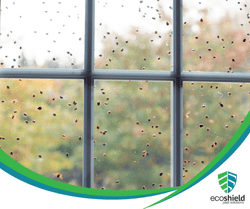 With spring just around the corner, it's crucial for homeowners to be vigilant and proactive in safeguarding their spaces from potential invaders. From insects seeking refuge in nooks and crannies to persistent rodents searching for warmth, the upcoming spring season brings its own set of challenges. We'll explore the common pests that tend to make their presence known during this time of year, providing insights and tips on how homeowners can effectively identify, prevent, and address these nuisances before they become unwelcome guests. Stay ahead of the curve to ensure a pest-free and enjoyable spring season in your home.
With spring just around the corner, it's crucial for homeowners to be vigilant and proactive in safeguarding their spaces from potential invaders. From insects seeking refuge in nooks and crannies to persistent rodents searching for warmth, the upcoming spring season brings its own set of challenges. We'll explore the common pests that tend to make their presence known during this time of year, providing insights and tips on how homeowners can effectively identify, prevent, and address these nuisances before they become unwelcome guests. Stay ahead of the curve to ensure a pest-free and enjoyable spring season in your home.
Why are there so many bugs in the spring?
The surge in bug activity during spring can be attributed to a combination of environmental and biological factors. As the temperatures begin to rise after the cold winter months, insects, especially those that have been in a dormant state, become more active. Many insects thrive in warmer conditions, and the onset of spring triggers their metabolism, prompting increased movement and reproduction.
One of the key reasons for the abundance of bugs in spring is the availability of food sources. Spring marks the time when plants start to bloom, providing a rich supply of nectar and pollen that serves as a vital food source for many insects. This abundance of food encourages their population growth and reproductive activities.
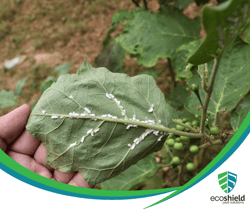 Additionally, spring showers contribute to the proliferation of bugs. The increased moisture creates favorable breeding conditions for insects like mosquitoes and gnats. Standing water becomes an ideal breeding ground for mosquitoes, leading to a noticeable surge in their numbers during this season.
Additionally, spring showers contribute to the proliferation of bugs. The increased moisture creates favorable breeding conditions for insects like mosquitoes and gnats. Standing water becomes an ideal breeding ground for mosquitoes, leading to a noticeable surge in their numbers during this season.
Furthermore, the longer daylight hours in spring play a role in the increased insect activity. Extended daylight serves as a signal for insects to become more active, forage for food, and engage in mating behaviors. This synchronization with the longer days contributes to the noticeable uptick in bug encounters during the springtime.
In summary, the combination of warmer temperatures, abundant food sources, increased moisture, and longer daylight hours creates optimal conditions for insects to thrive and reproduce, making spring a season marked by heightened bug activity. Homeowners should remain vigilant and take preventive measures to minimize potential pest infestations during this time of increased insect abundance.
What springtime pests pose problems for homeowners?
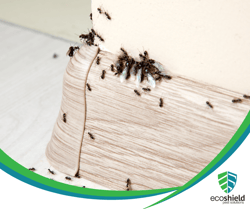 During spring, homeowners often find themselves grappling with a variety of pests that can pose significant challenges. One common nuisance is the resurgence of ants, as warmer temperatures awaken colonies from their winter dormancy. These industrious insects, seeking food and water, can invade homes in search of sustenance, making them a persistent annoyance for homeowners.
During spring, homeowners often find themselves grappling with a variety of pests that can pose significant challenges. One common nuisance is the resurgence of ants, as warmer temperatures awaken colonies from their winter dormancy. These industrious insects, seeking food and water, can invade homes in search of sustenance, making them a persistent annoyance for homeowners.
Mosquitoes also become prevalent during spring, especially in areas with standing water resulting from spring showers. The warmer weather and increased moisture provide ideal breeding conditions for mosquitoes. Their itchy bites not only cause discomfort but also raise concerns about the potential transmission of diseases.
Termites, another problematic pest in spring, are drawn to the warmth and humidity. These wood-destroying insects can wreak havoc on the structural integrity of homes, causing extensive and costly damage. Homeowners should remain vigilant for signs of termite activity, such as discarded wings or mud tubes, and take preventive measures to protect their properties.
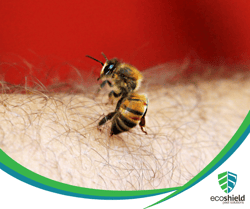 Springtime also heralds the return of stinging insects like bees, wasps, and hornets. These pests can build nests in and around homes, posing a threat to residents, especially those with allergies. Safely addressing and removing these nests is crucial to prevent painful stings and potential health risks.
Springtime also heralds the return of stinging insects like bees, wasps, and hornets. These pests can build nests in and around homes, posing a threat to residents, especially those with allergies. Safely addressing and removing these nests is crucial to prevent painful stings and potential health risks.
Rodents, such as mice and rats, can be particularly troublesome during spring as they seek shelter from the lingering cold and search for food. Their ability to squeeze through small openings makes it essential for homeowners to seal potential entry points and employ effective rodent control measures.
In conclusion, the array of pests that become problematic for homeowners in spring includes ants, mosquitoes, termites, stinging insects, and rodents. Recognizing the signs of infestation and implementing proactive measures can help mitigate the challenges posed by these seasonal invaders and ensure a more comfortable living environment during the warmer months.
Why do pests come indoors during the spring?
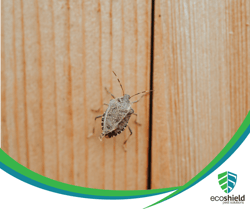 During the spring, pests often venture indoors for various reasons, seeking refuge and resources that support their survival and reproduction. As temperatures rise, many pests become more active and start looking for suitable environments to establish nests or breeding sites. Warmer weather prompts insects like ants, spiders, and beetles to explore new territories, and if there are cracks or openings in a home's exterior, these pests may find their way inside.
During the spring, pests often venture indoors for various reasons, seeking refuge and resources that support their survival and reproduction. As temperatures rise, many pests become more active and start looking for suitable environments to establish nests or breeding sites. Warmer weather prompts insects like ants, spiders, and beetles to explore new territories, and if there are cracks or openings in a home's exterior, these pests may find their way inside.
The availability of food sources plays a crucial role in attracting pests indoors during spring. As plants bloom and outdoor environments become more hospitable, insects follow the abundant supply of nectar, pollen, and other food sources. However, if these resources become scarce outside, pests may venture into homes in search of sustenance. Crumbs, spilled food, and open containers can be enticing for pests, drawing them indoors in search of readily available nutrition.
Moreover, spring showers can contribute to the migration of pests indoors. Excessive rain can flood their natural habitats, leading pests like ants, cockroaches, and rodents to seek drier and more stable conditions indoors. The desire for shelter from unpredictable weather conditions, coupled with the promise of food resources, makes homes an attractive destination for pests during the spring months.
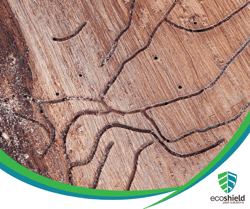 Pests come indoors during the spring as a response to changing environmental conditions. Whether it's the search for suitable nesting sites, abundant food sources, or refuge from adverse weather, the convergence of these factors often leads pests to infiltrate homes, making pest prevention and control efforts particularly important during the spring season.
Pests come indoors during the spring as a response to changing environmental conditions. Whether it's the search for suitable nesting sites, abundant food sources, or refuge from adverse weather, the convergence of these factors often leads pests to infiltrate homes, making pest prevention and control efforts particularly important during the spring season.
Are springtime pests only an indoor problem?
Springtime pests can pose challenges both indoors and outdoors, as various species become more active during this season. While some pests may primarily manifest indoors, others are more prominent outdoor nuisances.
Indoor pests such as springtails and carpenter bees may become problematic during spring. Springtails, tiny insects that thrive in moist conditions, often appear in bathrooms, kitchens, or basements. Carpenter bees, on the other hand, may drill into wooden structures, causing damage. Both of these pests can be indoor concerns during the spring season.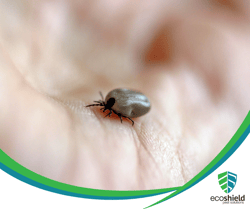 Conversely, ticks tend to become more active outdoors during late spring. These blood-sucking arachnids can pose health risks as they latch onto humans and animals. Ticks are commonly found in wooded areas, tall grasses, and shrubs, making outdoor activities potentially risky during this season.
Conversely, ticks tend to become more active outdoors during late spring. These blood-sucking arachnids can pose health risks as they latch onto humans and animals. Ticks are commonly found in wooded areas, tall grasses, and shrubs, making outdoor activities potentially risky during this season.
Additionally, bugs like boxelder bugs and stink bugs, which might have sought refuge indoors during colder months, tend to become more noticeable in the spring as they look to exit homes and return to their outdoor habitats. These pests can be a nuisance, especially as they gather around windows and doors, seeking a way outside.
In summary, springtime pests present challenges both indoors and outdoors. Understanding the specific behaviors of pests like springtails, carpenter bees, ticks, boxelder bugs, and stink bugs can help homeowners take appropriate measures to address and prevent infestations, whether inside or outside the home.
Can I prevent pests in my home this spring?
Absolutely! Taking proactive measures can significantly reduce the likelihood of pests invading your home during the spring. Start by conducting a thorough inspection of your property, sealing any cracks, gaps, or openings in windows, doors, and foundations. This simple step helps prevent insects and rodents from finding easy entry points into your home.
Maintaining a clean and clutter-free environment is another crucial aspect of pest prevention. Regularly clean and vacuum your living spaces, paying attention to areas where crumbs and food particles may accumulate. Dispose of garbage promptly and ensure that trash bins are tightly sealed. By eliminating potential food sources, you make your home less attractive to pests.
 Outdoor maintenance is equally important. Trim overgrown vegetation and bushes, as these can serve as hiding spots and pathways for pests. Keep a distance between your home and any shrubbery to reduce the chances of pests finding their way indoors. Additionally, address any standing water around your property, as it can attract mosquitoes and other insects. Regularly inspect and clean gutters to prevent water buildup, as damp conditions can be enticing for pests.
Outdoor maintenance is equally important. Trim overgrown vegetation and bushes, as these can serve as hiding spots and pathways for pests. Keep a distance between your home and any shrubbery to reduce the chances of pests finding their way indoors. Additionally, address any standing water around your property, as it can attract mosquitoes and other insects. Regularly inspect and clean gutters to prevent water buildup, as damp conditions can be enticing for pests.
Consider using natural deterrents and eco-friendly pest control methods. Planting certain herbs like mint or basil around entry points can act as a natural deterrent for insects. Diatomaceous earth is a non-toxic substance that can be sprinkled in areas prone to insect activity, effectively disrupting their exoskeletons and leading to dehydration.
 Finally, if you find signs of a pest infestation or suspect a problem, don't hesitate to consult with a professional pest control service. They can assess the situation, provide targeted solutions, and offer advice on long-term prevention strategies. Taking a proactive and comprehensive approach to pest prevention will help ensure a pest-free and enjoyable spring season in your home.
Finally, if you find signs of a pest infestation or suspect a problem, don't hesitate to consult with a professional pest control service. They can assess the situation, provide targeted solutions, and offer advice on long-term prevention strategies. Taking a proactive and comprehensive approach to pest prevention will help ensure a pest-free and enjoyable spring season in your home.
Can EcoShield Pest Solutions prevent springtime pests in my home?
Yes! Our Shield Home Protection Plan offers a comprehensive approach to pest management that focuses on the prevention of pests through the use of IPM or integrated pest management. Not only can we safeguard your home, but we can help treat existing infestations and offer solutions to keep your home pest-free in the future. Give EcoShield a call or fill out the form on this page today to get started!